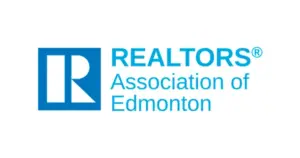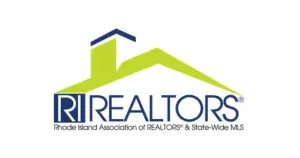If you’re working with a real estate agent in San Diego or nearby cities, there’s a good chance they use the San Diego Multiple Listing Service, also known as SDMLS. This tool enables agents to list, share, and update home information online—quickly and in real time.
Thanks to their careful work, a family looking for a downtown condo, a surfer hoping for a small beach cottage, and a grandparent searching for a quiet ranch all see the same accurate, up-to-date information. Long ago, agents carried handwritten index cards; today, powerful computers share thousands of listings in seconds, so buyers learn about new homes almost the moment a “For Sale” sign goes up.
The idea behind SDMLS started in 1878 when Cyrus Arnold helped organize the Real Estate Association of San Diego. As the city grew, this group changed names.
In 1905, it became the San Diego Realty Board. Then, in 1990, it became the San Diego Association of REALTORS®, also called SDAR.
In 2012, the word Greater was added to reflect the larger region. By 2018, a new system called SDMLS officially replaced the old system, Sandicor, after a court-supervised update.
In 2021, SDMLS partnered with the San Diego Union-Tribune to enable their home search tool, Just Knock, to display listings directly from the SDMLS feed.
Now, when an agent makes a change to a listing, it appears on thousands of websites within minutes. That makes it easier than ever for buyers and sellers to make smart, fast decisions.
Where SDMLS Works & How Agents Sign Up
While SDMLS originated in San Diego County, it now also serves many nearby areas. Agents can use it to search for and share listings in Temecula, Murrieta, and towns in Imperial, Los Angeles, Orange, and San Bernardino Counties.
This broad reach means that agents can help a family find a beach home in Oceanside or a ranch-style house near Lake Elsinore—all with one login. They don’t need to switch between systems or retype the same information multiple times.
There are three ways real estate agents or their teams can join SDMLS. Each option comes with different rules, prices, and levels of access.
| Type of Membership | Starting Cost | Quarterly Fee | Extras | Access Level |
|---|---|---|---|---|
| GSDAR Primary Member | Included in REALTOR® dues | $174 | SentriLock key box (~$100 every 6 months) | Full access + voting rights |
| Reciprocal Member | $50 one-time fee | $174 | Same lockbox options | Full access, no local voting |
| Non-REALTOR® Broker or Assistant | Broker: $250 / Agent: $25 | Broker: $174 / Assistant: $29 | IDX data feed: $10/month | View listings, no voting |
Primary members are full REALTOR® members. They undergo a background check, agree to follow a Code of Ethics and have the opportunity to vote on changes to the system each year.
Reciprocal members are agents from outside areas who wish to access SDMLS listings while maintaining their original board membership. They follow all the same listing rules but cannot vote locally.
Non-REALTOR® members can include tech assistants, support staff, or web developers who just need to view listings to help an agent or build a website. These members are still licensed under the California Department of Real Estate.
This flexible system helps a wide range of real estate professionals—from agents in the field to website builders behind the scenes.
What Can Be Listed
The SDMLS platform is designed to be far more versatile than a simple clearinghouse for detached, single-family homes. Licensed real estate professionals may upload listings for virtually any residential or small-commercial property type, including:
- Homes and Condos for families who want to move in right away.
- Townhomes and mobile homes offer smaller, flexible living spaces.
- Rental Units for people who prefer to lease instead of own.
- Empty Lots and Still-Unbuilt Houses that are waiting for future owners.
- Small Shops or Offices when a building is tiny enough for the neighborhood.
- Vacation Cottages that owners rent to travelers for part of the year.
Every night, a special computer program checks every listing in SDMLS to ensure it follows the rules and matches the facts it finds online. If the program identifies a significant price change, an empty box, or something that doesn’t make sense—such as labeling a three-bedroom condo as a five-bedroom house—it raises a warning flag for that listing.
The Tools That Keep Listings Updated & Organized
To ensure everything runs smoothly, SDMLS relies on several technical tools. The primary tool is called Paragon. It’s where agents enter the details of a listing—like price, number of bedrooms, photos, and home features.
Once the listing is added, Bridge Interactive helps translate the data so it works on all websites that use national listing standards, such as those set by RESO.
For home showings, SDMLS uses SentriLock. These are smart lockboxes that work with a phone app. Agents can unlock the door and check appointment times with just a few taps. If an agent changes the time of a showing, the update appears in Paragon and on websites immediately.
Agents also utilize additional tools that aid in pricing, marketing, and identifying potential home sellers. These tools save time, help agents stay organized, and make listings more helpful for buyers.
Local Involvement
SDMLS with Greater San Diego Association of REALTORS® (GSDAR) does more than real-estate data; its members actively give back to the community by:
- Pack backpacks full of school supplies so kids who need help can start class with bright pencils and fresh notebooks.
- Also, plant shade trees beside noisy highways to cool the air and reduce traffic dust, making neighborhoods cleaner and greener.
- Speak at City Hall hearings whenever new taxes or zoning rules might tilt the playing field because real stories from real buyers and sellers help lawmakers write fair laws.
- Simple acts like these transform a list of addresses into a force for good, demonstrating that REALTORS® care about more than just numbers on a screen.
Build a Website With WPResidence & MLSimport

Developing a real-time home-search website may appear complex, but it can be executed efficiently by following three essential steps:
- Ask SDMLS for an MLS RESO API key. This secret code allows your site to access the official listings, much like a library card that unlocks every book.
- Install WP Residence. It’s a WordPress theme that already knows where to place each home fact—price, bedrooms, bathrooms, even HOA fees—on tidy pages with a jumbo search bar and bright zoomable maps.
- Add MLSimport. Choose how often it updates (hourly for lightning speed, twice a day for balance, or nightly to keep your server running smoothly). The plugin turns each listing into a neat WordPress post while hiding special tags that search engines love.
By the end of a weekend, your new site can look as sharp as any big national portal while still living on a web address you own and control.
Table of Contents






